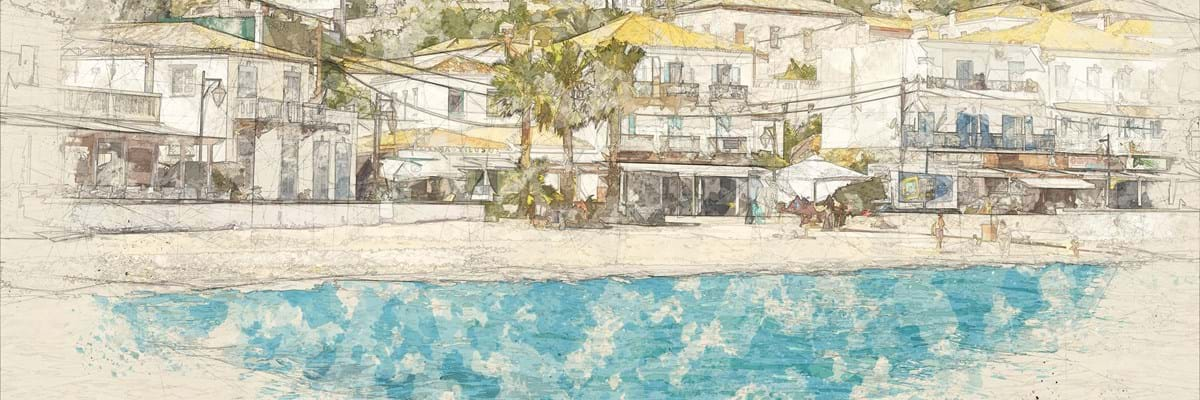Sunlight rains like diamonds on a sapphire sea, cheerful fishing boats bob in tranquil waters, waiters balance trays of iced coffee to convivial gatherings at cafés lining the harbour... Dominating the scene, like some benevolent Duchess displaced from the Côte d’Azur, looms the imposing limestone and marble façade of the Poseidonion Hotel. And in the piazza below, the statue of Bouboulina – the Spetsiot heroine who, in 1821, commanded her own battleship in the War of Independence against the Turks – gazes out to sea.
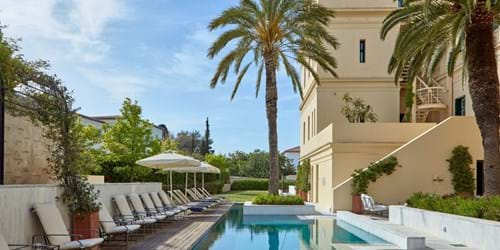
Such is the scene that greets visitors on arrival at the new harbour of Dapia, on the Greek island of Spetses. As a general rule, the more easily accessible an island, the more it falls prey to mass tourism. But not Spetses. Just some two hours from Piraeus, or 5 minutes by water taxi from Porto Heli, the island retains its authenticity, a popular bolt-hole for fashionable Athenians.
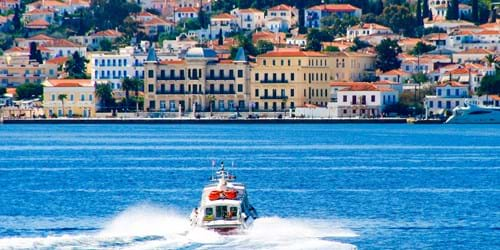
Much of the island’s character today is due to Sotirios Anargyros, a tobacco tycoon, who built the Poseidonion in 1914, as a luxurious retreat for hunting parties. An early Conservationist, he purchased two-thirds of the island and planted 100,000 Aleppo pines, to prevent over-development. He also built the single road that circumnavigates Spetses and, with profits from the hotel, founded an elite boarding school modelled on Eton. For literary sleuths, this is where John Fowles taught in the 1960s: his mysterious novel, “The Magus” was based on his experiences on this island.
Spetses is steeped in history and laced with charm. Cars being banned from town, I hailed one of the many horse buggies that congregate around Dapia. Ilias sported blinkers decorated with bronze Byzantine eagles, a red scarf, and an amulet against the Evil Eye. I climbed into an elaborate wooden carriage which would not have been amiss in Paris circa 1880, and Ilias set of with jaunty high-trot along the waterfront towards the Old Harbour, where elegant yachts moor in front of the island’s trendiest restaurants, and the shipyards which built Bouboulina’s flagship Agamemnon, a 33-metre corvette, still ply their traditional craft.
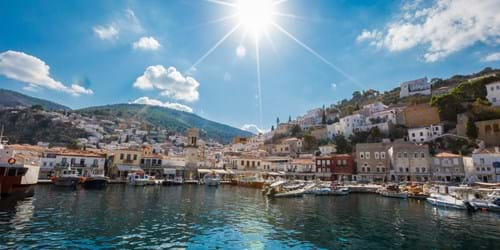
It is a delightful place to wander, the air salty and fresh. Past wooden skeletons of caïques, stopping for coffee at Mourayo – a characterful bar-restaurant which was once a pirates’ warehouse - climbing narrow cobbled streets ablaze with oleander and bougainvillea, admiring beautiful houses tinged with Moorish or Venetian influence, their pebble-mosaic courtyards fragrant with jasmine and lemon trees. Grown rich through shipping, Spetses attained glory fighting off the Turkish yoke, and descendents of the revolutionaries still inhabit these mansions, some of which are now discreet hotels or, like Bouboulina’s house, museums.
I reached the 17th-century fortified monastery of St. Nicholas, Patron Saint of Sailors, where Spetses’ “Freedom or Death” flag was hoisted in 1821, as a call to arms. Today it is a peaceful spot, with carved dragons crowning the gilded iconostasis, and candles flickering before the Saint’s icon, gratefully draped with votive offerings. In a corner of the courtyard, a plaque marks the spot where the nephew of Napoleon, Paul-Marie Bonaparte, who died for the Greek cause, lay pickled for five years in a barrel of rum, before his remains could receive more decorous despatch.
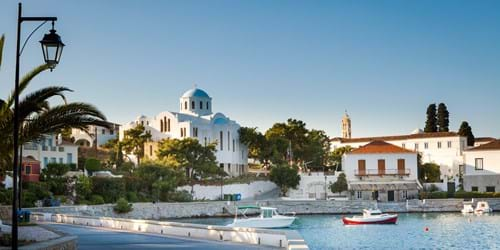
The island’s most famous beaches, Aghios Anargyros and Aghia Paraskevi, lie on the far coast, served by buses and tourist boats during high season. From Dapia, I took a water taxi around the island’s craggy shoreline, thick with Anargyros’ pines and indented with deep bays of clearest turquoise. Tiny churches nestled in coves, and caves winked above the waterline. At one point, I looked up to see a solitary white villa with Moorish arches standing proud atop a promontory: a private home where John Fowles once lived as a guest, minutely reinventing the house in his novel as Bourani, the House of the Magus.
Back in town, as evening fell, people thronged into boutiques selling designer beachwear and hand-stitched beaded sandals; young blades and old salts gathered at bars to sip cloudy ouzo and nibble octopus; couples strolled hand-in-hand along the waterfront. I watched the happy hubbub as the sky streaked pinky violet to velvet black, then clip-clopped back to the Old Harbour, for dinner. Tarsanas, one of the island’s best fish tavernas, with simple tables perched a toe-dip above the water, was abuzz with yachties and life. A delicious bottle of Strofilia wine materialised. And as a feast of seafood mezze and grilled black bream amassed before me, a small boat chugged into the harbour, stopped in front of the restaurant, and released a battery of spectacular fireworks into the starry night. No-one batted an eyelid. On a magical island, it seems, such is the stuff of life.



